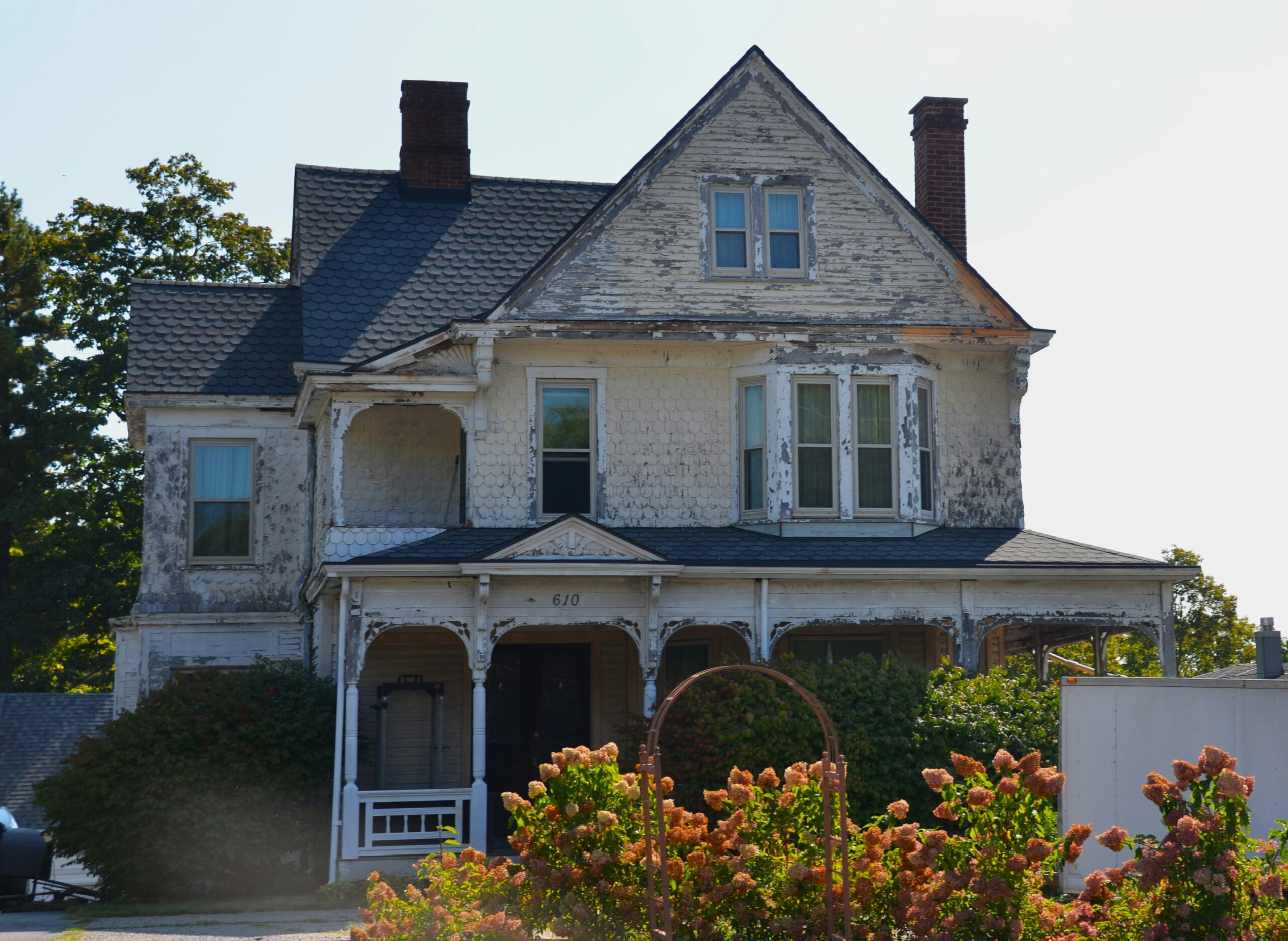Landlording 101: How to Buy a Rental Property
. Posted in News - 0 Comments
By Kimberly Rau, MassLandlords, Inc.
If you’re a new or prospective landlord, or just haven’t bought a rental property in a while, figuring out what rental properties to purchase and which to pass on can be stressful. Even experienced landlords might be new to buying real estate if, for example, you inherited the properties you manage now.

There are a lot of rental properties out there. Choose wisely. (Image: Osman Rana for Unsplash)
We recommend all new and potential landlords and property managers take our full one-day Crash Course in Landlording, which will tell you everything you need to know about running a compliant, safe, quality rental business.
This article will focus on the basics of selecting a rental property, including what things you can overlook and what warning signs you should never ignore. With this knowledge, you can be confident you are choosing the best available property for your situation.
This article starts from the point where you are actively looking for properties to buy. It assumes you are already working with an agent (if you need one) and are either pre-approved for a mortgage or a cash buyer. You cannot make a winning offer without one of these, so make sure your finances are in order before you start looking around.
Step 1: Decide what your rental market will be.
There are all kinds of rental properties out there. Some will be perfect for you. Some will not be a good fit for your situation, but will be ideal for someone else. The rental market refers to the location and type of property you rent out. What type of property you choose, as well as its location, determines what type of people you will rent to, how much rent you can charge and what amenities you will need to offer. Each has benefits, and each has possible drawbacks.
For instance, a property in an urban rental market will attract different renters from a property in a suburban neighborhood, or a rural guest house. These markets will also require different landlord approaches – tenants in a luxury rental will expect an attentive, experienced landlord. Roommates in a student rental may expect fewer amenities, but there will be more turnover.
Some markets, such as short-term furnished rentals and single-room occupancies, have special regulations that you should be aware of before investing. (For example, if you rent by the room, you – not the renters – must clean shared kitchen and bathroom spaces every 24 hours.)
When making these choices, consider the market you’re currently in, and pay attention to any changes on the horizon. You may love the idea of renting furnished rentals to tech professionals, but if that computer company is planning to move out of the city, you could find yourself with an empty unit and no one looking to move in.
Regardless of where you want to rent, and who you want to rent to, it’s important you know what you’re getting into to the best of your ability.
Step 2: Pick the best property for your business.
When choosing a property, location is a very important factor for a successful rental business. When you’re buying a house to occupy yourself, you have to consider what you want from your property. When you are buying a rental property as a business investment, you have to think about what your renters are going to want. This might be different from what you would choose for yourself.
First, make sure the property you’re choosing appeals to the people you want to rent to. For example, if you hope for lots of students, don’t buy a small one-bedroom cottage 20 miles from the university with no access to public transportation. If you are hoping to rent to families in the suburbs, look for properties in areas with well-rated public schools and other family-friendly amenities nearby.
Once you know where you want to buy, look at the actual properties themselves. This is called siting. Look for lots that are easy to maintain, roofs with easy access, and landscaping that doesn’t require a lot of maintenance (unless you are in the luxury market).
Step 3: Figure out the lead situation.
Lead paint was banned in 1978, but older homes may still contain lead. This is a problem because lead is very harmful, and children are susceptible to it.
Deleading is a complicated and expensive process. Properties with children under the age of 6 must be deleaded. Refusing to rent to families with small children is discrimination. You must delead. If you do not think you have the time or money to do this, pick a property that does not need deleading.
Step 4: What are the utilities and safety features like?
Once you’ve identified some potential properties, it’s time to think of things like utilities.
In a multifamily property, you cannot charge for utilities unless they are all separately metered and no common areas or other units are on that meter. This includes heat, electric and water. It is rare to submeter water. Most landlords will include it in the rent, but if you need to renovate anyway, remember it’s possible to get each unit on its own water meter. Consider adding this to your renovation plan.
Then start asking questions. Does the breaker panel need to be upgraded? Is the chimney lined? Are there smoke detectors already installed, or will you need to do that? How is the plumbing? Old and cracked, or new cast iron or plastic? These are things you will need to address, and some fixes are more expensive than others.
Step 5: Consider amenities.
With the basics out of the way, it’s time to consider what amenities you will offer your renters. Offering more amenities means you can ask for more rent, but having more perks also means more maintenance and may push you out of your intended market.
Basic amenities renters will appreciate (and, in some markets, expect) include cable or satellite connections, dishwashers, a fenced yard and/or in-unit laundry. You don’t have to provide the washer and dryer, but having hookups waiting will be attractive to potential tenants. Look at storage options – where will your renters put their coats and shoes? Are there closets? Shelves? Finally, a unit that is Wi-Fi ready is practically a necessity these days.
If you are considering luxury rentals, you should also look at what other amenities the property already has, such as gyms or elaborate gardens. Make sure if you are buying the whole building (instead of a single condo) you understand what the maintenance costs for these amenities will be.

Step 6: Look for warning signs.
A rental can have the best amenities out there, but if it has “bad bones,” you could be in for a rough ride as a landlord. This is why an inspection is so important. The following are just a few of the things that could be very expensive for you to fix or change:
- Warped or sagging floors
- Cracked beams or foundations
- Old furnaces, water heaters, or original oil tanks
- Knob-and-tube wiring
- Original wooden windows
Once you’ve made an offer, an inspector can identify these problems, and give you a good idea of what it will cost to fix them. It’s up to you whether it’s worth it to still buy the property, or continue looking.
That said, there are things that look bad to buyers that actually aren’t that big of a deal. Cracks or dents in sheetrock are easy to repair. Bad paint on walls or trim can be re-done quickly. Similarly, ugly bathroom mirrors or medicine cupboards are cheap enough to replace.
Don’t get hung up on little things like that if the property is otherwise ideal.
Step 7: Offer to buy.
Once you find a property you like, create a simple financial model with estimates for monthly income, monthly expenses and needed one-time renovations. If you can afford it with room for error, it’s time to make an offer. If you are using a buyer’s agent, this will be something they do on your behalf, based on what you want.
Offers are often dependent on certain conditions being met. These are called contingencies.
Your offer can be contingent on many different things. You can say your offer is contingent on the property being delivered vacant (if renters are already living there), or occupied. Your offer can be contingent on the results of the inspection (always get an inspection), lead testing or financing, just to name a few. Contingencies are your chance to verify that your financial model could be accurate.
The sellers can accept your offer, reject it or counter-offer with terms of their own. You may go through more than one round of negotiation depending on their response. Do not overpay.
Step 8: Conduct due diligence on occupants (if any).
If the property has tenants already living in it, you will need to do due diligence on them as well. Your offer can be contingent upon the results of this.
Ask to see rental agreements even if they are expired. This will tell you who is supposed to be living in the unit(s) you will be purchasing. It will also let you know the terms of their current lease or agreement. If you are buying the property occupied, you will have to abide by the existing rental agreement until it expires. If it’s a lease, this could be months. If everyone’s lease has expired and they are tenants at will, you will have to abide by the agreement for at least 30 days. Keep this in mind when you are making your offer. You also need to know whether any security deposit or last month’s rent was collected for any occupied unit, such that you must credit the renter this money later.
You can make your offer contingent on screening the renters themselves, but in a seller’s market, this is likely to get your offer rejected.
Step 9: Buy the property.
Once all of the details have been ironed out, you will enter into a purchase and sale agreement and eventually go to closing. Closing is where money exchanges hands, papers are signed, and keys are turned over. You’re the new property owner. Now the real work begins. But if you’ve followed our advice, you’ve bought the right rental for you, and know what you’re getting into in terms of renovations and repairs. Congratulations and good luck!




